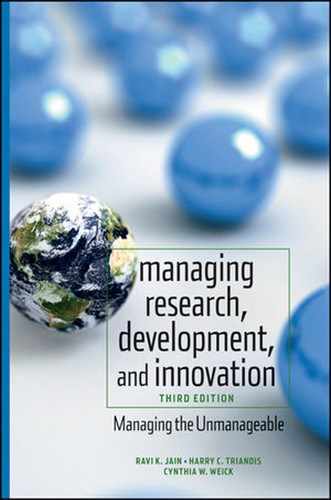Herold, D. M., and C. K. Parsons (1985). Assessing the feedback environment in work organizations: Development of the job feedback survey. Journal of Applied Psychology, 70, 290–305.
Hersey, P., K. H. Blanchard, and D. E. Johnson (2007). Management of Organizational Behavior, 9th ed. Englewood Cliffs, NJ: Prentice-Hall.
Hindo, B. (2007). At 3M, A Struggle between efficiency and creativity. Businessweek, (4038), 8–14.
Hobday, M. (2005). Firm-level Innovation Models: Perspectives on Research in Developed and Developing Countries. Technology, Analysis and Strategic Management, 17(2), 121–146.
Holt, K., H. Geschka, and G. Peterlongo (1984). Need Assessment. New York: John Wiley & Sons.
Howard, W. G., and B. R. Guile (Eds.) (1992). Profiting From Innovation. National Academy of Engineering. New York: Free Press.
Hritz, C. (2008). Change Model: Three stages to success. Leadership Excellence, 15 (May).
Hughes, K. (1986). Balancing Act: How One Manager Walks the Narrow Line Between Corporate Goals and Basic Research. New York: Wall Street Journal.
Iansiti, M. (1995). Technology integration: Managing technical evolution in a complex environment. Research Policy, 24(4), 521–542 (July).
Ilgen, D. R., C. D. Fisher, and M. S. Taylor (1979). Consequences of individual feedback on behavior in organizations. Journal of Applied Psychology, 64(4), 349–371.
Isen, A. M., et al., (1985). The influence of positive effect on the unusualness of word associations. Journal of Personality and Social Psychology, 48, 1413–1426.
Jabri, M. M. (1992). Job satisfaction and job performance among R&D scientists: The moderating effects of perceived appropriateness of task allocation decisions. Australian Journal of Psychology. 44, 95–99.
Jackson, S. E., and R. S. Schuler (1985). A meta-analysis and conceptual critique of research on role ambiguity and role conflict in work settings. Organizational Behavior and Human Decision Process, 36, 16–78.
Jain, R. K., L. V. Urban, and G. S. Stacey (1980). Environmental Impact Analysis-A New Dimension in Decision Making. New York: Van Nostrand Reinhold.
Janis, I. L. (1972). Victims of Groupthink: A Psychological Study of Foreign-Policy Decisions and Fiascoes. Boston: Houghton Mifflin.
Janis, I. L. (1982). Victims of Groupthink: A Psychological Study of Foreign-Policy Decisions and Fiascoes, 2nd ed. Boston: Houghton Mifflin.
Jaques, E. (1961). Equitable Payment, New York: Wiley (2nd ed., 1970).
Jaruzelski, B., and K. Dehoff. (2007). The Customer Connection: The Global Innovation 1000. Strategy+Business, Booz Allen Hamilton, 1–16.
Jones, O. (1994). Establishing the determinants of internal reputation: The case of the R&D scientists. R&D Management, 24(4), 325–339 (October).
Joshi, A., and Matocchio, J. J. (2008). Compensation and reward systems in a multicultural context. In D. L. Stone, and E. F. Stone-Romero (Eds.) The influence of culture on human resources management processes and practices, 181–205. New York: Psychology Press.
